Dublin Coddle Recipe & History
Stovetop – Oven – Slow Cooker – Instant Pot Pressure Cooker Instructions
For St. Patrick’s Day celebrations or any cold winter evening, enjoy a delicious Irish casserole known as a Dublin Coddle. A rustic one-pot meal that is easy to throw together and is simplicity at its finest.
 The key ingredients for a Dublin coddle include pork sausages, leaner cut bacon, potatoes and onions that simmer in a stock for several hours producing the ultimate comfort meal loved dearly by Dublin city folk. Many Dublin families will have their own flavor variations to use in the stock such as chicken, beef or ham with a splash of Guinness stout added at the very end of cooking. While others may just use water or milk for the liquid. I have also seen many discuss using hard apple cider. There really is no right or wrong way to prepare a coddle. After combing over several recipes to find the most authentic cooking method, I found that some Dubliners will throw all the ingredients in the pot with stock and just boil away. While others prefer to brown the bacon and sausage first, then saute the onions in the remaining bacon grease before simmering everything together. I opted for browning the meats and sauteing the onions first. I personally feel it takes the dish up a notch and it more aesthetically pleasing to the eye. In this recipe I used both chicken stock and hard cider. The cider really added a wonderful hint of apple flavor with the pork meats. Bacon and hard apple cider meld together with all the ingredients resulting in a lovely and comforting meal.
The key ingredients for a Dublin coddle include pork sausages, leaner cut bacon, potatoes and onions that simmer in a stock for several hours producing the ultimate comfort meal loved dearly by Dublin city folk. Many Dublin families will have their own flavor variations to use in the stock such as chicken, beef or ham with a splash of Guinness stout added at the very end of cooking. While others may just use water or milk for the liquid. I have also seen many discuss using hard apple cider. There really is no right or wrong way to prepare a coddle. After combing over several recipes to find the most authentic cooking method, I found that some Dubliners will throw all the ingredients in the pot with stock and just boil away. While others prefer to brown the bacon and sausage first, then saute the onions in the remaining bacon grease before simmering everything together. I opted for browning the meats and sauteing the onions first. I personally feel it takes the dish up a notch and it more aesthetically pleasing to the eye. In this recipe I used both chicken stock and hard cider. The cider really added a wonderful hint of apple flavor with the pork meats. Bacon and hard apple cider meld together with all the ingredients resulting in a lovely and comforting meal.
Instructions are provided to cook on the stove top, oven, slow cooker or Instant Pot pressure cooker. I’ll have to say out of the 4 cooking options, simmering low and slow on the stovetop or baking in the oven produced the best melded flavors from all the ingredients. I could really taste more of an apple flavor in the carrots and potatoes that the cider imparted.
More delicious Irish recipes, check out Guinness Beef Stew, Corned Beef and Cabbage, Irish Lam Stew, Corned Beef Bubble and Squeak, and Irish Soda Bread.
History of Dublin Coddle
Outside the city of Dublin, don’t expect many Irishmen to be familiar with a bowl of Dublin Coddle as it’s considered city food for the working class. In most Dublin households, a steaming hot bowl of Dublin Coddle tastes like home and is considered “the lifeblood of the common man”. Dubliners will tell you coddle is best enjoyed with a pint of Guinness and plenty of soda bread to sop of the juices. A hearty coddle typically consists of the staple ingredients of thick cut potatoes, sliced onions, bacon rashers and pork sausages, known as bangers, that slowly simmer on the stove for hours during the winter months. A traditional coddle did not use carrots but more households began to add carrots in the 20th century to add more nutritional value. The word “Coddle” derives from the French term “Caudle” which means to boil gently, parboil or stew.
Dublin Coddle is the quintessential slow cooked meal dating back to the first famine times in the late 1700’s where “anything to hand, save your nearest and dearest, got thrown into the pot.” A few different theories float around on how Dublin Coddles became popular in Ireland. In one popular notion, it was because devoted Irish wives could start the meal cooking in a pot and go to bed. The coddle could then simmer for hours so a dear husband had a hearty meal waiting for him when he finally arrived home from a long night at the pub. Coddle also became a traditional Thursday night meal for the Catholic faith. Since meat is forbidden for devout Catholics on Fridays. Cooking up a coddle on a Thursday was a convenient way to use up the remaining bangers and rashers of bacon in the household. Leftover coddle was then saved and reheated on Saturday night after a late night of fun. Before Take Away Fish and Chip shops were available in the cities for late evening snacks, It was typical Dublin tradition to cook up a pot of Dublin Coddle early in the day and let it cool down. Then the coddle could be reheated later for supper after a night out at the pictures or pub. Dublin Coddle still remains popular to cook to this day since the dish can be started in the morning and slow cook all day to be ready to eat after a day of work.
Late 18th Century :
In the first great famine of Ireland 1765-1767, a large migration of people moved out of the Irish countryside and into the big city of Dublin to find better work opportunities. These new city dwellers brought with them small animals such as hens and pigs to raise for food since they could not afford lamb. After a pig was slaughtered and sold off, the remains left behind were turned into sausages. The sausages and streaky bacon rashers were boiled up with root vegetables for a cheap and nourishing family meal.
Jonathon Swift, author of Gullliver’s Travels and Dean of the Christ Church of Dublin considered Dublin Coddle one of his favorite meals, and was known for referencing coddle in his literature.
20th Century:
Irish author James Joyce known for the great literary work of Ulysses, makes reference to the dish of coddle in his published work of short stories called Dubliners capturing the everyday life of the working man and families struggling to survive in the city of Dublin.
Resources:
IrishCentral, A Traditional irish Cold Weather Treat Dublin Coddle Recipe, by Holly Thomas Apr 24, 2017, https://www.irishcentral.com/roots/genealogy/a-traditional-irish-solution-to-post-pub-hunger-dublin-coddle
Delishably, The Best Irish Coddle Recipe by L M Reid in 2011, https://delishably.com/meat-dishes/How-to-make-Irish-Coddle-My-mothers-recipe-with-photos
SundayTribute, Food That Only The Irish Eat (Apparently), published by Derek O’Connor September 21,2008, https://web.archive.org/web/20090421080838/http://www.tribune.ie/article/2008/sep/21/food-that-only-the-irish-eat-apparently/
Ifood.tv, Coddle, https://ifood.tv/european/coddle/about
Dublin Coddle Recipe:
- 1 pound bacon cut into 1 inch chunks*
- 2 pounds pork sausage links cut into 2-3 inch chunks**
- 2 large onions sliced 1/2 inch thick
- 2-3 cloves garlic peeled and minced
- 3 pounds potatoes (5 large potatoes or 9 medium sized red/new potatoes) peeled and thickly sliced 1/2 inch
- 2-3 carrots sliced 1/2 inch thick
- 1/4 cup fresh parsley
- 1/4 cup fresh thyme
- ground black pepper
- 2 cups chicken stock
- 16 ounces hard apple cider (or regular cider)
- *In Ireland bacon is called “rashers” and it is more similar to Canadian bacon that has less fat. Canadian bacon can be used in place of American bacon. Even better if you can find European style bacon at your grocers.
- **In the United Kingdom, pork sausages are called “bangers”. If you cannot find bangers in the United States, bratwurst makes a close substitute or chicken sausage also work well.
-
Stovetop Method:
-
In 6 quart Dutch oven over medium-high heat cook bacon pieces until crisp. Remove bacon pieces and set aside on a paper towel lined plate to drain. Discard excess bacon grease from pot and leave behind enough grease to coat the bottom of the pot. Add the sausage to the pot and let them brown on all side for 2-3 mins per side. Remove the sausage and set aside in a plate.
-
Note: Potatoes and carrots keep their shape better during cooking if they are thickly sliced by at least ½” thickness. Any thinner, then you run the risk of the vegetables mushing up. Add the onion slices and carrot chunks and sauté in the bacon and sausage grease until softened, add in the garlic and sauté for about 30 seconds or until fragrant. Pour in 1 cup of hard apple cider and let the onion mixture come to a boil. Scrape up any bits stuck to the bottom of the pot to deglaze. Remove the onion mixture and set aside on a plate. Remove the Dutch oven from the heat. -
Add a layer of sliced potatoes to the bottom of the pot and sprinkle with some black pepper, parsley and thyme.
-
Next add a layer of the onion mixture, then sprinkle a layer of cooked bacon pieces. Repeat with another layer of sliced potatoes, seasonings, onion mixture and bacon. Place the sausage on the very top.
-
Pour in the chicken stock and apple cider (just enough until the vegetables are covered with liquid). Let the liquid come to a boil and cover with a lid, then turn the heat down to medium low. Let simmer on the stove for 1 ½ hours.
-
Serve in bowls and enjoy with some bread to sop up the delicious juices.
-
-
Oven Method:
-
Preheat the oven to 300 degrees F.
-
In 6 quart Dutch oven over medium-high heat cook bacon pieces until crisp. Remove bacon pieces and set aside on a paper towel lined plate to drain. Discard excess bacon grease from pot and leave behind enough grease to coat the bottom of the pot. Add the sausage to the pot and let them brown on all side for 2-3 mins per side. Remove the sausage and set aside in a plate.
-
Note: Potatoes and carrots keep their shape better during cooking if they are thickly sliced by at least ½” thickness. Any thinner, then you run the risk of the vegetables mushing up. Add the onion slices and carrot chunks and sauté in the bacon and sausage grease until softened, add in the garlic and sauté for about 30 seconds or until fragrant. Pour in 1 cup of hard apple cider and let the onion mixture come to a boil. Scrape up any bits stuck to the bottom of the pot to deglaze. Remove the onion mixture and set aside on a plate. Remove the Dutch oven from the heat.
-
Add a layer of sliced potatoes to the bottom of the pot and sprinkle with some black pepper, parsley and thyme. Next add a layer of the onion mixture, then sprinkle a layer of cooked bacon pieces. Repeat with another layer of sliced potatoes, seasonings, onion mixture and bacon. Place the sausage on the very top. Pour in the chicken stock and apple cider (just enough until the vegetables are covered with liquid). Starting on the stovetop, let the liquid come to a boil and cover with a lid. Place the covered pot in the oven and let bake/cook in the oven for 3 hours. Check the pot after a couple hours to see if more liquid needs to be added. Make sure at least one inch of liquid remains in the pot at all times.
-
-
Pre-heat the slow cooker on high heat setting.
-
In large skillet over medium-high heat, cook bacon pieces until crisp. Remove bacon pieces and set aside on a paper towel lined plate to drain. Discard excess bacon grease from pot and leave behind enough grease to coat the bottom of the pot. Add the sausage to the pot and let them brown on all side for 2-3 mins per side. Remove the sausage and set aside in a plate.
-
Note: Potatoes and carrots keep their shape better during cooking if they are thickly sliced by at least ½” thickness. Any thinner, then you run the risk of the vegetables mushing up. Add the onion slices and carrot chunks and sauté in the bacon and sausage grease until softened, add in the garlic and sauté for about 30 seconds or until fragrant. Pour in 1 cup of hard apple cider and let the onion mixture come to a boil. Scrape up any bits stuck to the bottom of the pan to deglaze. Remove the onion mixture and drippings and set aside in a bowl.
-
To the slow cooker, add a layer of sliced potatoes to the bottom and sprinkle with some black pepper, parsley and thyme. Next add a layer of the onion mixture with drippings, then sprinkle a layer of cooked bacon pieces. Repeat with another layer of sliced potatoes, seasonings, onion mixture and bacon. Pour in the chicken stock and apple cider (just enough until the vegetables are covered with liquid). Cover with a lid. Cook on high heat setting for 4 hours or low heat setting for 8-10 hours. During the last hour of cooking remove the lid and place the sausages on the very top.
-
Serve in bowls and enjoy with some bread to sop up the delicious juices.
-
-
Instant Pot Pressure Cooker Method:
-
 Press the Saute button and adjust to high heat setting. Add bacon pieces to the inner pot and cook until crisp. Remove bacon pieces and set aside on a paper towel lined plate to drain. Discard excess bacon grease from pot and leave behind enough grease to coat the bottom of the pot. Next, add the sausage to the inner pot and let them brown on all side for 2-3 mins per side. Remove the sausage and set aside in a plate.
Press the Saute button and adjust to high heat setting. Add bacon pieces to the inner pot and cook until crisp. Remove bacon pieces and set aside on a paper towel lined plate to drain. Discard excess bacon grease from pot and leave behind enough grease to coat the bottom of the pot. Next, add the sausage to the inner pot and let them brown on all side for 2-3 mins per side. Remove the sausage and set aside in a plate. -
Note: Potatoes and carrots keep their shape better during cooking if they are thickly sliced by at least ½” thickness. Any thinner, then you run the risk of the vegetables mushing up. To the inner pot, add the onion slices and carrot chunks and sauté in the bacon and sausage grease until softened, add in the garlic and sauté for about 30 seconds or until fragrant. Pour in 1 cup of hard apple cider and let the onion mixture come to a boil. Make sure to scrape up any bits stuck to the bottom of the pot to deglaze. Remove the onion mixture and set aside on a plate. Press the Keep Warm/Cancel button.
-
To the inner pot, add a layer of sliced potatoes to the bottom of the pot and sprinkle with some black pepper, parsley and thyme. Next add a layer of the onion mixture, then sprinkle a layer of cooked bacon pieces. Repeat with another layer of sliced potatoes, seasonings, onion mixture and bacon. Place the sausage on the very top. Pour in the chicken stock and apple cider (just enough until the vegetables are covered with liquid). Cover with a lid and close the lid to seal, then make sure the pressure valve is closed to the sealing position. Press the Manual/Pressure Cook button and adjust to High Pressure setting. Set the cooking time to 15 minutes. Once the cooking time is completed, quick release the pressure valve until the pressure pin has dropped. Open the lid.
-
Serve in bowls and enjoy with some bread to sop up the delicious juices.
Additional St. Patrick’s Day Recipes:
 Irish Colcannon Potatoes – Mashed Potato with Kale and Bacon
Irish Colcannon Potatoes – Mashed Potato with Kale and BaconColcannon is true Irish soul food. The dish consists of mashing together buttery mashed potatoes with cooked kale or cabbage and leeks for flavoring.
Corned Beef Bubble and Squeak
Bubble and Squeak is a traditional Monday lunch in England to take the leftover potatoes and vegetables from Sunday supper and fry it up to enjoy for lunch the next day. The odd name is said to come from the noises made while cooking it.
Guinness Beef Stew – Irish Beef Stew
Most every pub you visit in Ireland will offer Beef and Guinness Stew on the menu. Stewing the beef in Guinness stout beer tenderizes the beef and adds a robust, malty flavor to the stew.
Irish Lamb Stew
Traditionally Irish lamb stew is cooked with lamb meat (neck bones or shanks) and root vegetables such as potatoes and onions with water. The stew is cooked over low heat until the meat is fall apart tender.
Irish Soda Bread
Here’s a wonderful traditional Irish Soda bread recipe that can be found in homes and markets all over Ireland. In the United States, Irish Soda bread is popular to accompany Corned Beef and Cabbage when celebrating Saint Patrick’s Day.
Corned Beef and Cabbage
My family and I look forward to enjoying corned beef and cabbage dinner as part of celebrating Saint Patrick’s Day every year. This is a great no-fuss meal to serve on Saint Patrick’s Day or any day that you desire.
Irish Sausage Rolls
In Ireland, sausage rolls are very popular. You can find them served at pubs, at home parties, and can even be purchased ready made at bakeries.
Guinness Chocolate Cake
A moist rich chocolate cake with wonderful malty notes from the addition of Guinness stout beer.
Guinness Black Bottomed Cupcakes
Enjoy this twist on traditional black bottom cupcakes using Guinness Chocolate Cake and an Irish cream cheese filling
Categories:
Ground Pork & Sausage Recipes Irish Pork Casseroles Pork Stew and Soups Pressure Cooker Pork Recipes Saint Patrick's Day Slow Cooker Pork Recipes Soups & Stews History
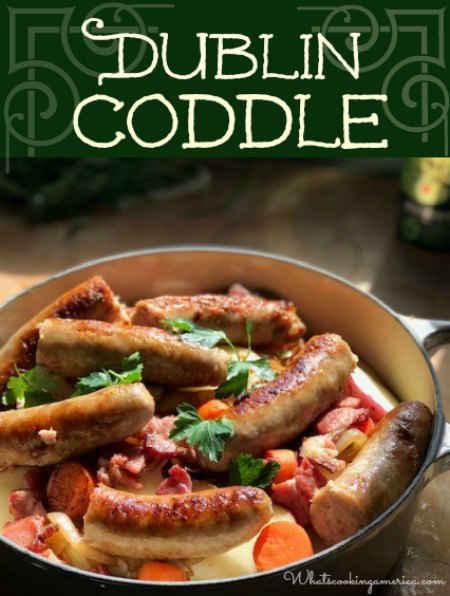
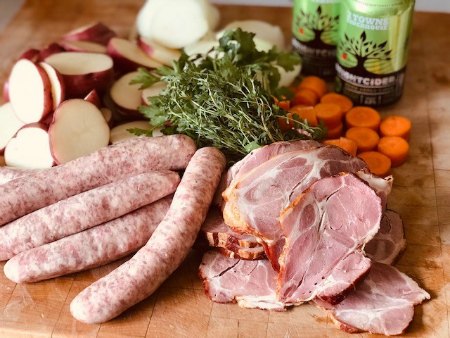
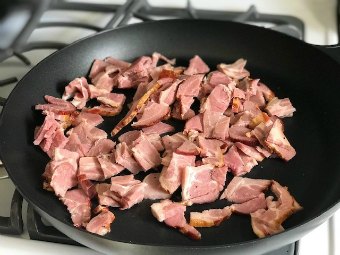

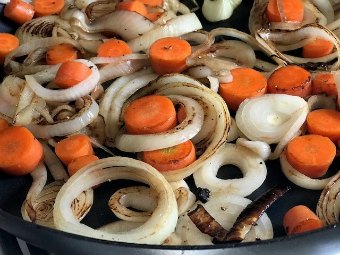
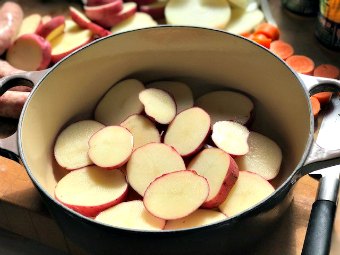
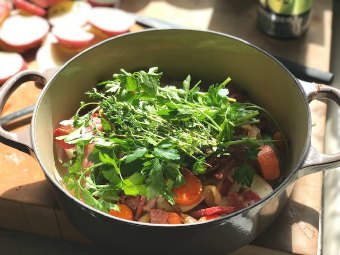
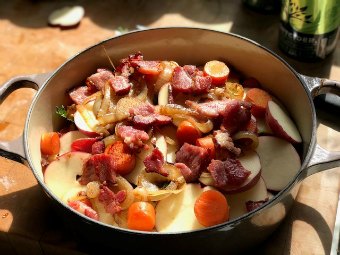

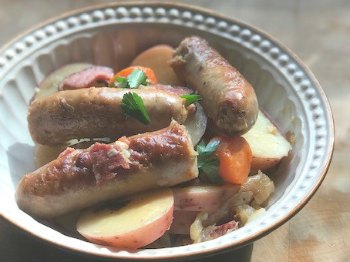

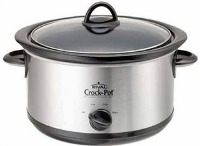


4 Responses to “Dublin Coddle Recipe”
James
Made the Dublin Coddle today, followed directions to almost a tee. Made a few modifications for simplicity and palate (thick cut pepper bacon, some cayenne pepper and some cumin) and had fantastic results! Super easy and almost goof proof! I do have a VERY low simmer setting on my stove which I think is crucial to these type meals. Flavor, ease, and complete satiation make this a recipe I’ll be adding to my staple list! Bravo!
Whats Cooking America
So glad you enjoyed the recipe, it very flexible to adjust to your taste buds. I agree that the flavor really comes out when it’s simmered slowly.
Susan
The other day I was grocery shopping, looking in the case with Italian sausages, and I happened to see a new item, Irish Sausages! I bought one package to try them. Fortunately, I ran across this recipe today!
The only thing I don’t already have on hand is bacon as you describe. However, I do have about 3/4 of a block if smoked salt pork in my freezer. Do you think I could use that? If not, I have regular bacon (rashers) I just got that same day, and, maybe, some leftover ham buried somewhere in my freezer.
I have a couple of bottles of Guinness stout leftover from St. Patrick’s Day, as well as some sparkling hard cider (Angry Orchard), apple juice, applesauce, and spiced apple cider vinegar, so I might do a mixture.
I love my Instant Pot. It has a slow cooker function, so I might experiment with it, or, I could use a dutch oven, either on the stove or in the oven.
I recently got back into bread baking and have some real Irish course ground whole wheat flour and a new jar of baking soda I had planned to use on St. Patty’s, so I guess I will finally make that soda bread!
I’ll figure it out. Seems like this will be a delicious meal for the weekend!
Thanks!
Eiverra laura
the recipe you have been published here, is very awesome